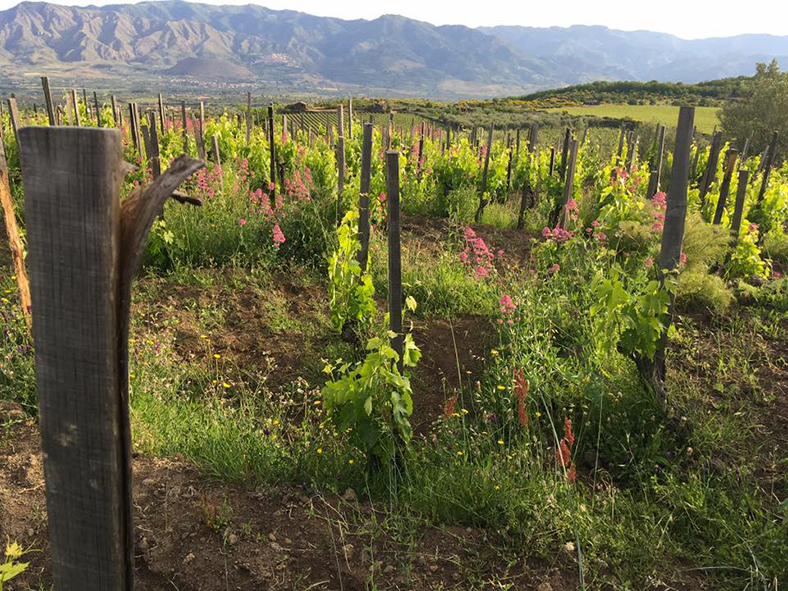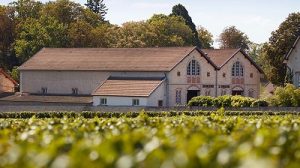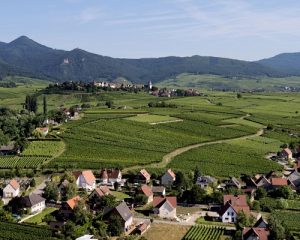
Frank Cornelissen. A name that you might have heard spoken about in recent times. Somewhere between a rising star and a longstanding classic, we’re talking about a highly coveted estate whose wines are difficult to get hold of. It is, therefore, an honour for us to introduce you to this new partner domain and its history, recent but nonetheless exciting.
Sicilian azienda Frank Cornelissen, located on the northern slopes of Mount Etna, was founded in 2001. Originally from Belgium, Franck established himself in just a few years thanks to a work ethic easily matching that of the region’s longstanding stars. And this to the point that, now, his wines sell like hot cakes in some of the best wine bars. Frank began to show an interest in wine as a teenager, as you can read in number 135 of Le Rouge et le Blanc, an edition dedicated to Etna wines. After having worked in several unrelated industries, he moved to Italy for professional reasons, and here he began to pursue his passion for wine more seriously, even providing consulting services. Then came a day that would change his life…the day he saw Mount Etna. It was love at first sight, and that’s where it all began…
A unique vineyard, demanding and ambitious work
Since 2001, the vineyard has gradually been expanded, parcel by parcel, and the land now covers 24 hectares overall, some of this cultivated as high as 980 metres above sea level. Out of these 24 hectares, 19 are used for growing vines, and the rest are for growing olives, buckwheat and fruit trees.
The main grape variety cultivated is Nerello Mascalese, but other local vines such as Nerello Capuccio, Minella Bianco, Minella Nera, Alicante Bouschet, Malvasia, Catarratto, Moscadella, Grecanico Dorato and Carricante play their role, too. There is a high proportion of old vines, with some of them over 100 years old. Frank also replanted several root stocks using massal selection.
The continental climate here is particularly open to the elements, harsh and snowy in the winter, hot and sunny in the summer. The vineyard’s proximity to the volcano means the soil is made up of different kinds of basalt and the drainage is good. The altitude allows the vines to retain a good level of freshness.
All of the work is carried out by hand and is often difficult, especially with the demands of organic growing, made yet more complex by efforts towards biodynamics. Frank Cornelissen is unique in many respects within the region, making him a highly respected figure. He tries to avoid treating his vines at all, and most of the time he succeeds in this endeavour. On rare occasions, he sees it necessary to use small amounts of copper and sulphate. The soils are hardly ploughed at all. His vines aren’t planted as densely as those of his neighbours, as he thinks ventilation in the vineyard is important. Yields are also low, producing from 25 to 40 hl/ha depending on the parcel. As is often the case with fine wine makers, there is no strict method to follow every year, rather adjustments are made based on the characteristics of each vintage and the weather conditions that year. Overall, the Cornelissen philosophy is to let the vine do its thing, as it were.
The harvest takes place quite late in the year, between October and November depending on the parcels, so that a good level of maturity can be sought; to take extra care, the harvesters pass through the vineyard several times.
Ultra-natural vinifications with little intervention
The domain’s cuvées can be organised into several collections: the easy-drinking Susucaru cuvées, the more serious Mun Jebel wines, the lieux-dits range (MunJebel Rosso + initials of the placename) and then the Magma selection.
The grapes are destemmed and lightly pressed, and all three of the colours are fermented with their grape skins, followed by particularly long macerations of 1 to 2 months. Each parcel is vinified separately, and the blend varies depending on the vintage.
Fermentation is carried out by indigenous yeasts, but in order to limit any risks, the process is instigated by a pied-de-cuve. This method is the perfect compromise between using commercial yeasts that could spoil the wine’s authenticity and leaving the indigenous yeasts to react without control. This technique is also good for getting to know the indigenous yeasts, and it involves collecting some healthy grapes a few days before the harvest and letting them ferment naturally. The small amount means that the wine maker can easily control and observe the microbiological environment, thus avoiding the spread of undesirable yeasts that might develop ‘deviant’ aromas. A few days later, the rest of the harvest is added to the same vat. The indigenous yeasts from the pied de cuve are, by then, much stronger, meaning that any newer yeasts have no chance to react.
The maturation takes place in epoxy steel vats and buried amphora pots, there is no wood used at all. The wine is filtered very lightly before bottling.
Domaine Frank Cornelissen wines
Whilst Frank Cornelissen’s wines were somewhat irregular right at the beginning of his production, this is no longer a problem, and they are now considered among the best the region has to offer. They are highly coveted by wine enthusiasts and difficult to get hold of!
Overall, the domain’s different cuvées are distinguished by their elegance and freshness, all whilst retaining a certain power thanks to their beautiful tannin. Pure and precise, they demonstrate the capacity of fine wine makers to truly master natural vinification.



